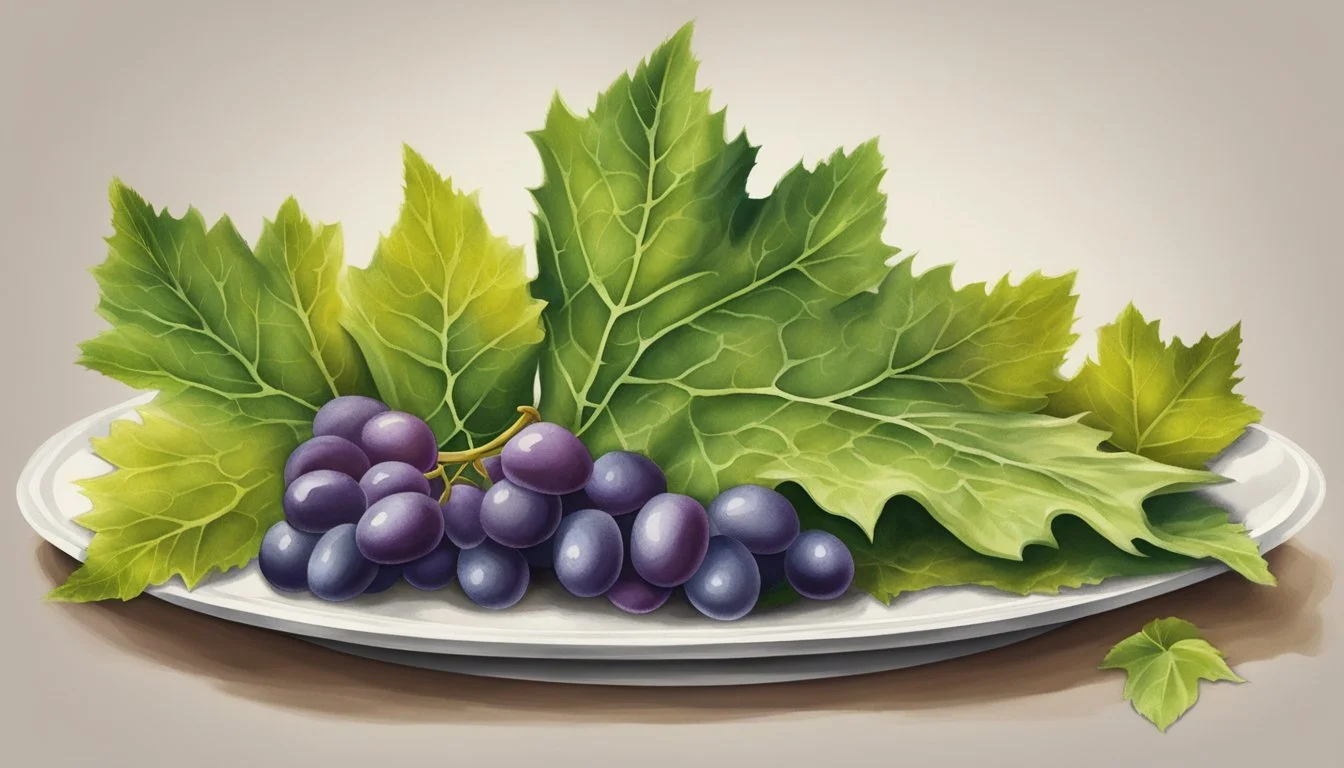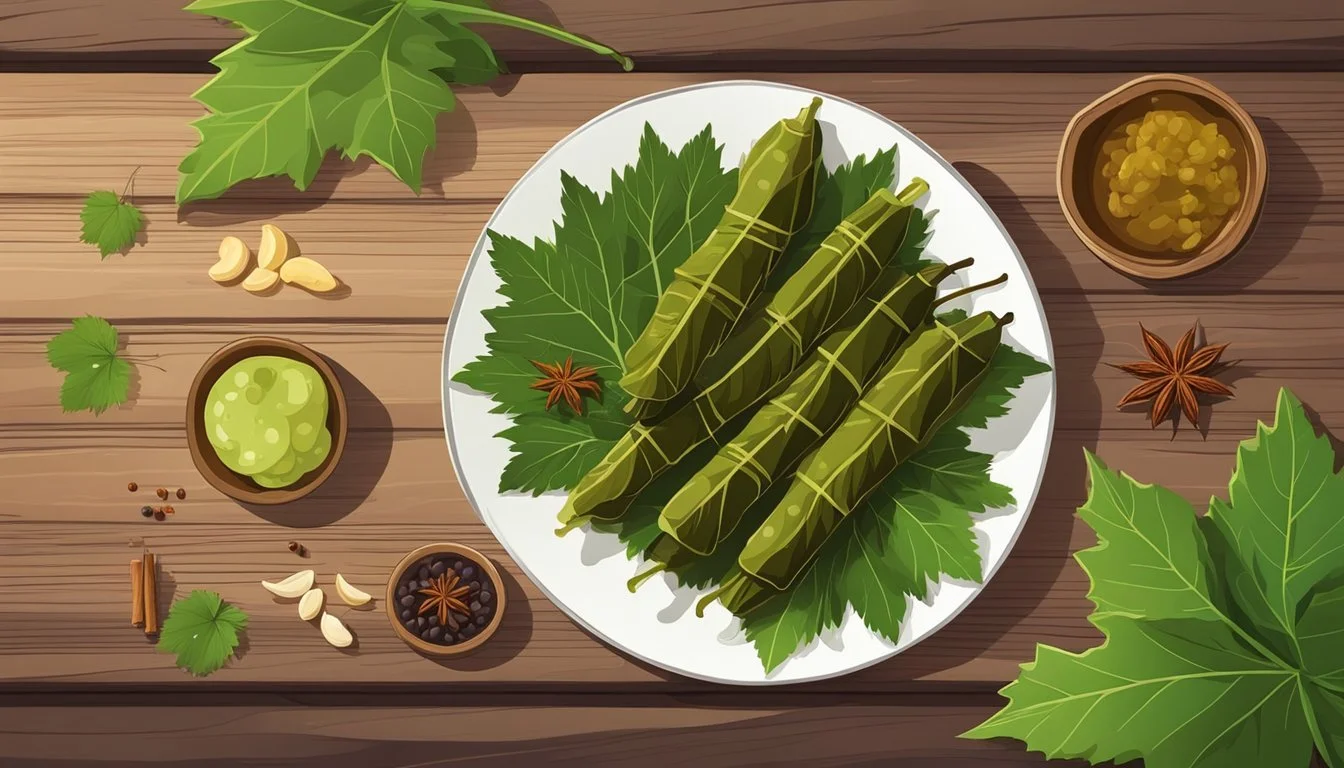How to Reheat Gluten-Free Stuffed Grape Leaves
Easy and Effective Methods
Reheating gluten-free stuffed grape leaves can be a breeze with the correct methods. These delightful parcels, often known as dolmades, retain their nutritious and savory qualities when reheated properly. One effective way to reheat them is using an oven method to bring back their original texture and flavor. Preheat your oven to 350°F (175°C), arrange the grape leaves in a single layer on a parchment-lined baking sheet, and heat them until they are warmed through.
For a quicker option, you can use a microwave. Place the stuffed grape leaves on a microwave-safe plate, sprinkle some water or cover them with a damp paper towel, and heat on high for 1-2 minutes per piece. This method ensures they stay moist and flavorful.
Maintaining the gluten-free nature of the dish while reheating is crucial. Always use gluten-free broth or water if adding liquids. These methods not only retain the taste but also ensure the health benefits of your gluten-free stuffed grape leaves are preserved.
Understanding Gluten-Free Stuffed Grape Leaves
Stuffed grape leaves are a staple in Mediterranean and Middle Eastern cuisine. When made gluten-free, they cater to individuals with gluten sensitivities or those following a gluten-free diet. Key aspects such as their origins, culinary significance, and health benefits are essential to grasp.
The Origins and Culinary Context
Stuffed grape leaves, known as dolmas, have a rich history in Mediterranean and Middle Eastern cuisine. These regions have used grape leaves for centuries to wrap various fillings, creating a dish that is both flavorful and versatile.
The typical ingredients include rice, herbs, and spices, while meat is sometimes added. For a gluten-free version, care is taken to avoid ingredients containing gluten, ensuring people with gluten sensitivities can enjoy them. Vegan and vegetarian versions are common, focusing on plant-based components.
Health Benefits and Dietary Considerations
Gluten-free stuffed grape leaves offer several health benefits. They are usually low in calories and rich in dietary fiber, vitamins, and minerals. The grape leaves themselves contain antioxidants, which contribute to overall health.
Choosing a gluten-free recipe ensures that the dish is safe for those with celiac disease or gluten intolerance. Additionally, making them vegan or vegetarian further adds to their healthfulness, avoiding ingredients like meat that may not suit everyone’s dietary needs.
Using olive oil and fresh herbs not only enhances the flavor but also boosts nutritional value, making gluten-free stuffed grape leaves a health-conscious choice for various diets.
Selecting Ingredients for Gluten-Free Stuffed Grape Leaves
When preparing gluten-free stuffed grape leaves, choosing the right type of grape leaves and prepping vegetables and herbs with care is crucial. This ensures the final dish is both safe for those avoiding gluten and delicious.
Choosing the Right Type of Grape Leaves
Selecting fresh or high-quality preserved grape leaves is essential. Fresh grape leaves are typically found in Middle Eastern or Mediterranean grocery stores. For preserved options, look for jars of grape leaves packed in brine. Ensure the label does not list any gluten-containing additives.
Inspect the leaves for any tears or discoloration. Medium-sized leaves work best for rolling. Rinse them thoroughly to remove excess salt if using preserved leaves.
Key Points to Remember:
Source: Fresh from specialty stores or preserved in brine.
Quality: Look for undamaged, medium-sized leaves.
Preparation: Rinse if using preserved leaves.
Prepping Vegetables and Herbs
Using fresh vegetables and herbs enhances the flavor and keeps the dish gluten-free. Essential ingredients include onion, mint, dill, parsley, and tomato. These should be finely chopped to integrate well with the stuffing.
Rice is the primary filler. Use medium or long-grain rice. Soak the rice beforehand to ensure even cooking. Flavor the rice mixture with fresh lemon juice, extra virgin olive oil, salt, and pepper.
Key Points to Remember:
Vegetables: Onion, tomato.
Herbs: Mint, dill, parsley.
Preparation: Finely chop all additions.
Rice: Soak medium or long-grain rice before use.
Seasoning: Lemon, olive oil, salt, and pepper.
Preparation Fundamentals
Preparation of gluten-free stuffed grape leaves starts with carefully handling the grape leaves and creating a flavorful filling.
Rinsing and Blanching Grape Leaves
Begin by rinsing the grape leaves under cold water to remove any brine or impurities. This step is crucial for ensuring the leaves are clean and more pliable for rolling. After rinsing, blanch the leaves by submerging them in boiling water for 1-2 minutes. This process not only softens the leaves but also enhances their vibrant green color. Immediately transfer the leaves to an ice bath to stop the cooking process. Pat them dry with a paper towel to remove excess moisture.
Tip: Choose fresh or high-quality jarred grape leaves for the best results. The quality of leaves significantly impacts the final texture and taste of the dolmades.
Mixing the Filling and Rolling Leaves
The stuffing mixture is central to flavorful dolmades. Start by sautéing finely chopped onions in olive oil until they're translucent. Add ingredients like rice, fresh herbs (such as dill and parsley), pine nuts, and lemon juice. Season with salt and pepper. Cook the mixture until the rice is partially done, as it will finish cooking inside the grape leaves.
To roll the leaves, place a leaf shiny side down. Add a heaping tablespoon of filling to the center. Fold in the sides and roll the leaf tightly from the bottom, creating a neat, compact dolma. Arrange rolled leaves in a single layer at the bottom of a pot, seam side down, to prevent unrolling during cooking.
Cooking Techniques
When reheating gluten-free stuffed grape leaves, choosing the right technique and paying attention to timing and temperatures are critical for achieving the best results.
Boiling Vs. Steaming
Boiling involves submerging the stuffed grape leaves in a pot of boiling water or vegetable broth. This method helps maintain moisture but can sometimes lead to a mushy texture if not monitored carefully.
On the other hand, steaming preserves more of the original texture and flavor. In a steamer basket, place the stuffed grape leaves above simmering water. Adding a splash of lemon juice or olive oil to the water can infuse subtle flavors.
Boiling Pros: Quick and straightforward. Maintains moisture.
Steaming Pros: Retains texture and flavor better. More forgiving.
Timing and Temperatures
Precision in timing and temperature is crucial. When boiling, maintain a gentle simmer rather than a rolling boil to avoid breaking apart the grape leaves. Heat for approximately 5-7 minutes until thoroughly warmed.
For steaming, set the steamer to a medium heat. The stuffed grape leaves should be steamed for about 10 minutes until they are heated through but still firm.
In both methods, monitor internal temperatures with a food thermometer to ensure they reach at least 165°F (74°C) for safety.
Serving Suggestions
To enjoy gluten-free stuffed grape leaves to their fullest, consider pairing them with complementary side dishes and creating delicious dipping sauces. Here are some specific ideas to enhance your dining experience:
Pairing with Side Dishes
When serving stuffed grape leaves, think about dishes that balance and enhance their flavors. Greek salad, featuring fresh tomatoes, cucumbers, olives, and feta cheese, adds a refreshing contrast. Hummus is another excellent choice, offering a creamy texture that pairs well with the grape leaves.
For a heartier meal, consider roasted vegetables like eggplants, bell peppers, and zucchini. These add a savory and earthy flavor that complements the stuffed grape leaves. Plain yogurt or a simple yogurt sauce can also be served on the side for added richness and tang.
Creating a Dipping Sauce
A well-crafted dipping sauce can elevate the taste of stuffed grape leaves. A lemon and olive oil dressing brings a zesty and bright flavor. Mix olive oil with fresh lemon juice, a pinch of salt, and minced garlic for a simple yet delightful sauce.
For something creamier, combine plain yogurt with minced garlic, chopped fresh mint, a splash of lemon juice, and a dash of salt to create a yogurt dipping sauce. This adds both a cool, creamy element and a hint of tartness, complementing the stuffed grape leaves perfectly.
Reheating Gluten-Free Stuffed Grape Leaves
To reheat gluten-free stuffed grape leaves, use different methods such as the stovetop, microwave, and oven. Each method helps retain the texture and moisture of the grape leaves.
For the stovetop, place a shallow pan over medium heat. Add a small amount of extra virgin olive oil or vegetable broth to prevent sticking. Arrange the grape leaves seam side down. Cover the pan and let them cook for 5-7 minutes until heated through.
In the microwave, place the grape leaves on a microwave-safe plate. Sprinkle with water or cover with a damp paper towel to maintain moisture. Heat on high for 1-2 minutes per grape leaf. Adjust the timing based on the microwave wattage.
The oven method helps preserve and enhance the flavor. Preheat the oven to 350°F (175°C). Place the grape leaves in a baking dish. Add a little broth or water to keep them moist. Cover with foil and bake for 15-20 minutes.
These methods ensure that gluten-free stuffed grape leaves are heated evenly and retain their texture and moisture. Whether served warm or cold, these techniques will bring out the best in your dish.
Storage Solutions
Managing the storage of gluten-free stuffed grape leaves ensures their freshness and extends their shelf life. Two effective methods are short-term refrigeration and freezing for longer-term preservation.
Short-term Refrigeration
For short-term refrigerating, place the stuffed grape leaves in an airtight container to maintain their moisture. Adding a little olive oil can prevent them from drying out. Refrigerated grape leaves generally stay fresh for up to 3-4 days.
Place them on a single layer within the container to avoid squishing. Use a paper towel between layers if stacking is necessary. This method minimizes the risk of the grape leaves' delicate texture being damaged.
Freezing and Thawing
For longer-term storage, freezing is ideal. Place the stuffed grape leaves in a freezer bag, removing any excess air before sealing. Stacking them in a single layer ensures they do not stick together.
When ready to use, thaw the grape leaves in the refrigerator overnight. This slow thawing process helps maintain their texture and flavor. If pressed for time, they can be thawed at room temperature for a few hours. It's crucial to avoid microwaving them directly from the freezer to preserve their quality.







